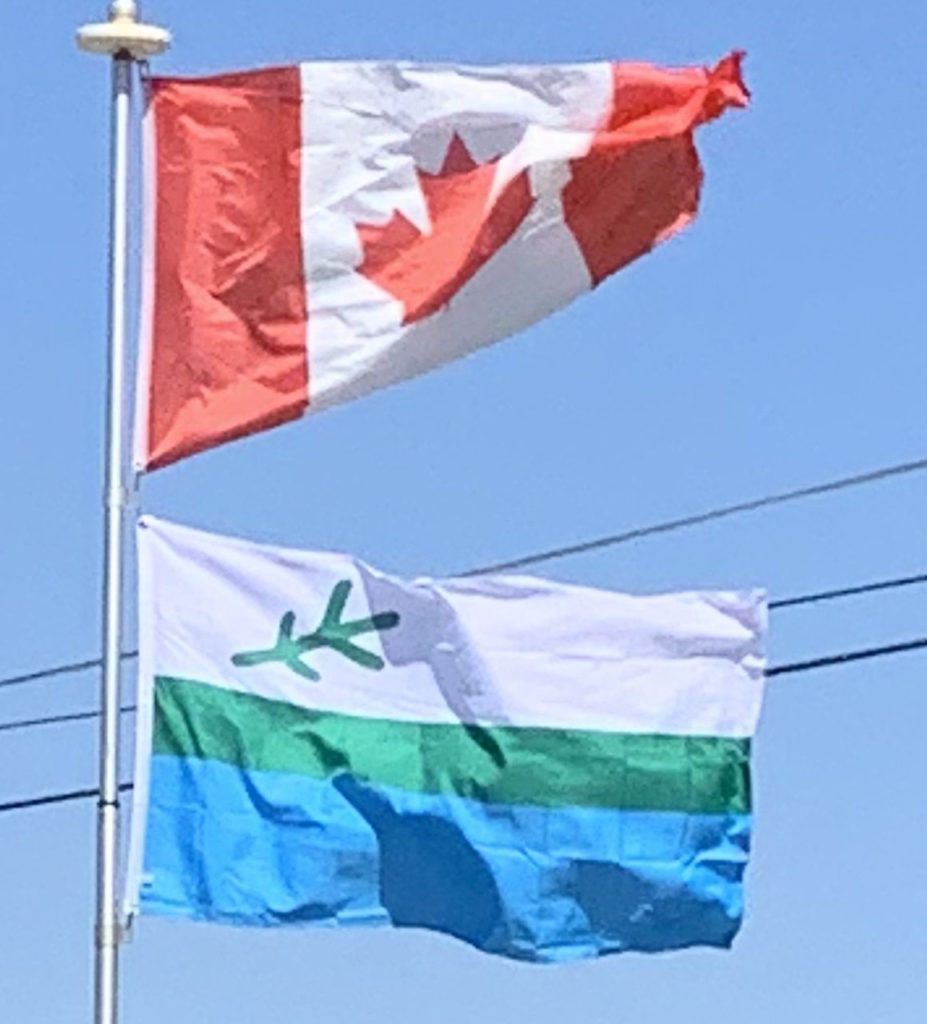The twig is in two year-growths to represent the past and future of Labrador. The shorter growth of the inner twigs represents the hardships of the past, while the outer twigs are longer as a representation of the hope Labradorians have for the future. The three branches represent the three founding nations of Labrador; the Innu, the Inuit, and the European settlers. The three branches emerging from a single stalk represents the unity of the distinct peoples in the brotherhood of all mankind, thus representing people of these and all backgrounds in Labrador. Since the black spruce, a member of the pine family of trees is the official tree of the Province of Newfoundland and Labrador it also serves as a reminder that Labrador is part of that larger entity.
Presentation:
Originally, 64 flags were manufactured, each sewn together by Martin’s wife; one for each of the 59 towns and villages in Labrador, one for each of the other three Labrador members of the House of Assembly, and one each for Martin and his wife personally. The flags were sent out to the communities for display on March 31, 1974, the anniversary of Newfoundland joining confederation (the time was one second before midnight so as not to be on April 1). On April 1, the three flags intended for MHAs were presented to them in a public ceremony at the Confederation Building, which houses the Provincial Legislature, in St. John’s.
